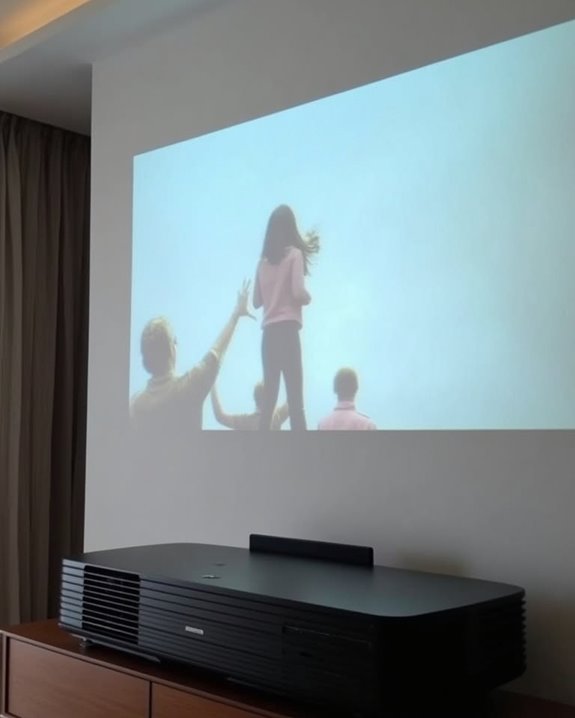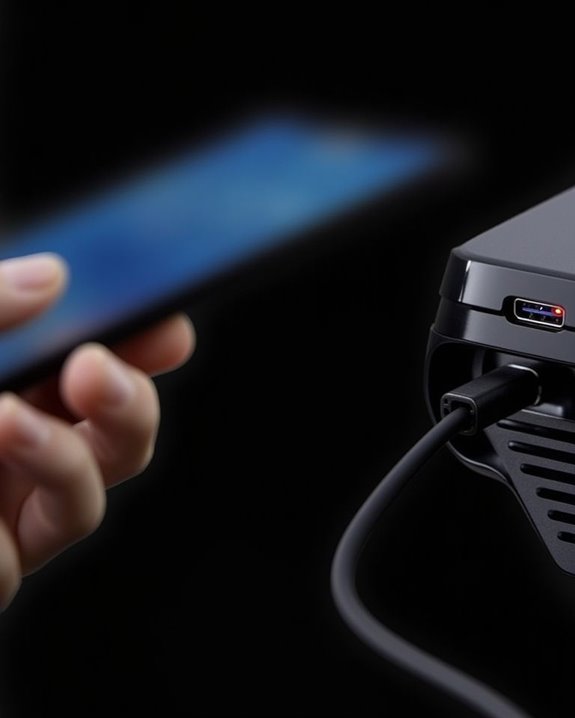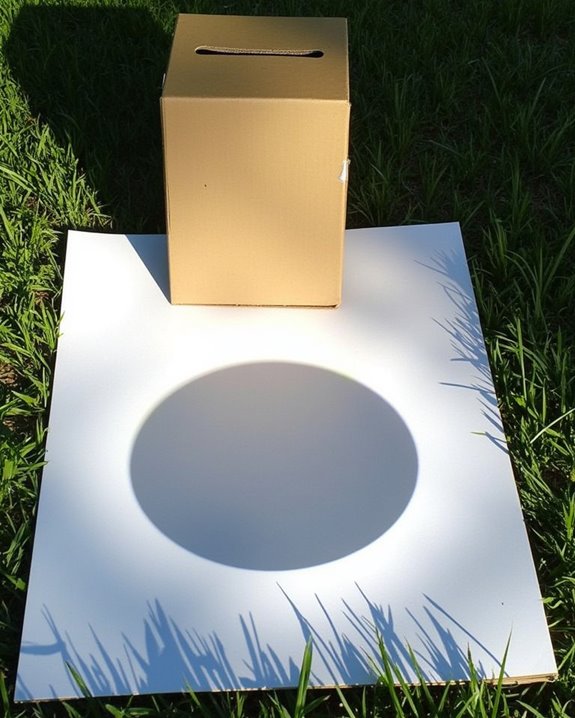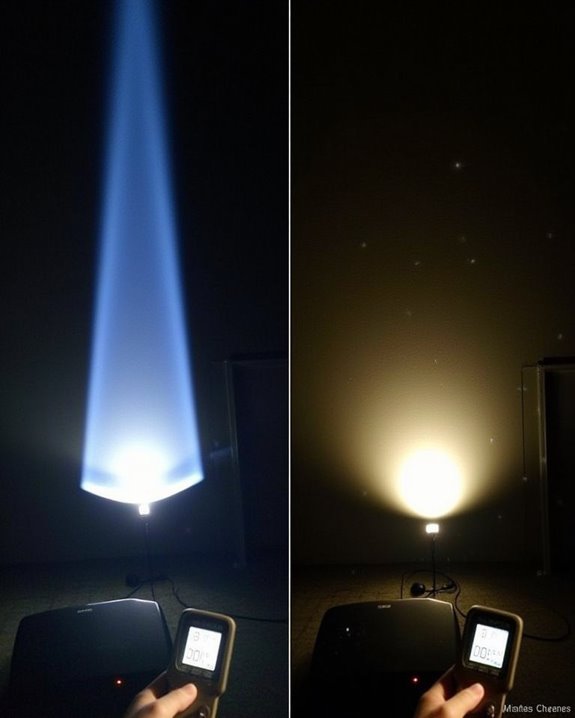You might think traditional projectors require vast spaces to create theater-sized images, but short throw projectors defy this assumption. These innovative devices can project large, crisp displays from just a few feet away, transforming even compact rooms into immersive viewing environments. Using specialized wide-angle lenses and advanced optical technology, they eliminate common issues like shadows and distortion while maintaining excellent image quality. As home entertainment continues evolving beyond conventional TVs, understanding how these space-saving projectors work could revolutionize your viewing experience.
Key Takeaways
- Short throw projectors display large images from just a few feet away, ideal for smaller spaces where conventional projectors won’t work.
- These projectors have throw ratios between 0.4 and 1.0, requiring less distance than standard projectors to create the same image size.
- They minimize shadows and reduce glare from ambient light, offering improved viewing experiences in well-lit rooms.
- Short throw models can be placed on tables, mounted on walls, or installed on ceilings without blocking viewers’ sightlines.
- They differ from ultra-short throw projectors, which can be placed inches from screens while short throw needs about 4 feet distance.
How Short Throw Projectors Revolutionize Home Entertainment
While traditional projectors once required vast spaces to deliver cinematic experiences, short throw projectors have completely transformed the home entertainment landscape with their space-efficient design and versatile capabilities. You’ll notice immediate benefits in rooms of any size, as these compact devices can project large, crisp images from just a few feet away, effectively eliminating shadows and reducing glare from ambient lighting sources.
The revolutionary design allows you to place furniture wherever you want without blocking the projection path, creating more functional living spaces that integrate seamlessly with your existing sound integration systems. With smart features built into many models, you can stream content directly without additional devices, bringing theater-quality entertainment to your living room, bedroom, or dedicated cinema space without sacrificing valuable floor space or requiring complex installation procedures. Many short throw projectors now incorporate auto keystone correction to ensure perfectly aligned images regardless of placement or angle.
Technical Aspects: Throw Ratio and Lens Technology Explained
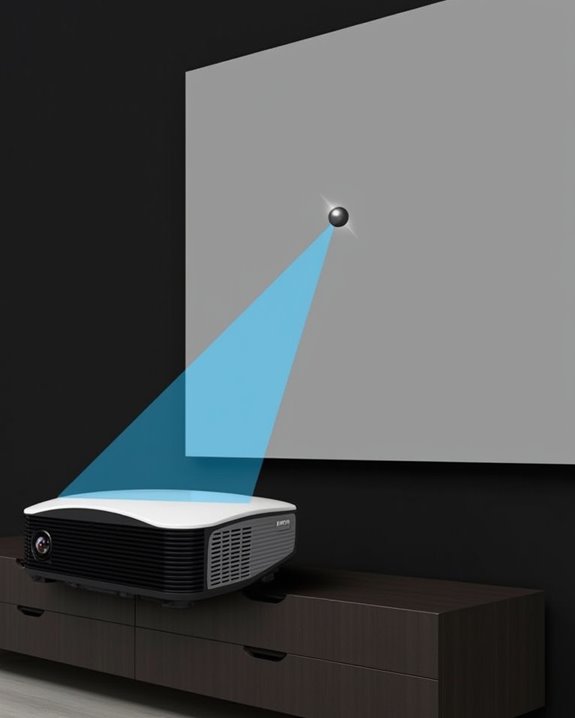
When understanding short throw projectors, you’ll find the concept of throw ratio to be the fundamental technical aspect that determines their remarkable space-efficiency. This ratio, calculated as the distance from projector to screen divided by image width, typically ranges from 0.4 to 1.0 for short throw models, allowing you to achieve large images from just a few feet away.
The optical design of these projectors incorporates specialized wide-angle lenses that bend light at sharper angles, projecting wider images at closer distances without distortion. Advanced lens calibration techniques guarantee ideal focus and brightness across the entire image, despite the challenging optics involved. This complex lens assembly, more sophisticated than standard projector lenses, requires precise engineering to maintain image quality while providing the installation flexibility that makes short throw projectors perfect for smaller spaces. Many top models also feature auto keystone correction and AI electric focus to simplify setup and enhance image clarity.
Short Throw vs. Ultra-Short Throw: Key Differences and Use Cases
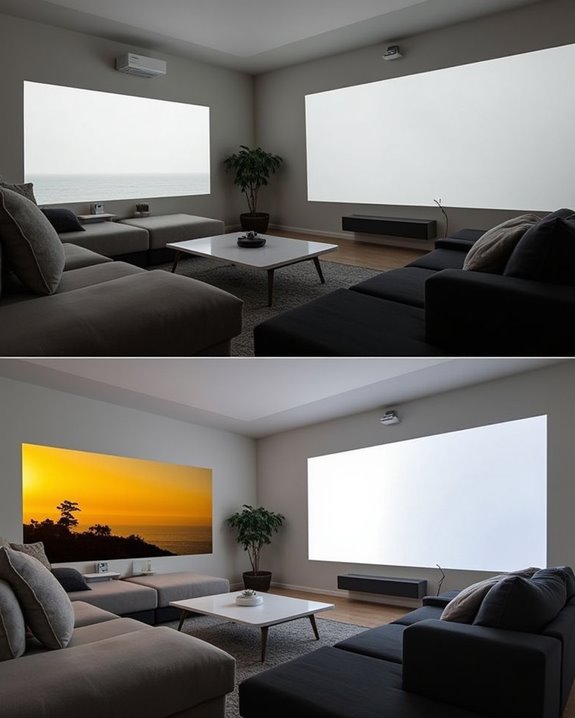
Although both are space-saving alternatives to standard projectors, short throw and ultra-short throw (UST) projectors differ markedly in their throw ratios, installation requirements, and ideal use scenarios. With throw ratios under 0.5:1, UST projectors can create a 100″ image from mere inches away, while short throw models require about 4 feet for the same size, compared to standard projectors’ 10-foot requirement.
Projection placement is notably more flexible with UST models, virtually eliminating shadows by positioning at the screen’s base rather than behind viewers. Screen compatibility becomes essential with both technologies, particularly for USTs which demand tensioned, flat surfaces to maintain image quality. You’ll find USTs ideal for cramped spaces like small apartments, while short throw projectors better suit medium-sized classrooms or conference rooms where some distance is still available.
For optimal viewing, pairing UST projectors with Ambient Light Rejecting (ALR) screens enhances image quality in bright room conditions.
Setting Up Your Short Throw Projector: Placement and Screen Selection
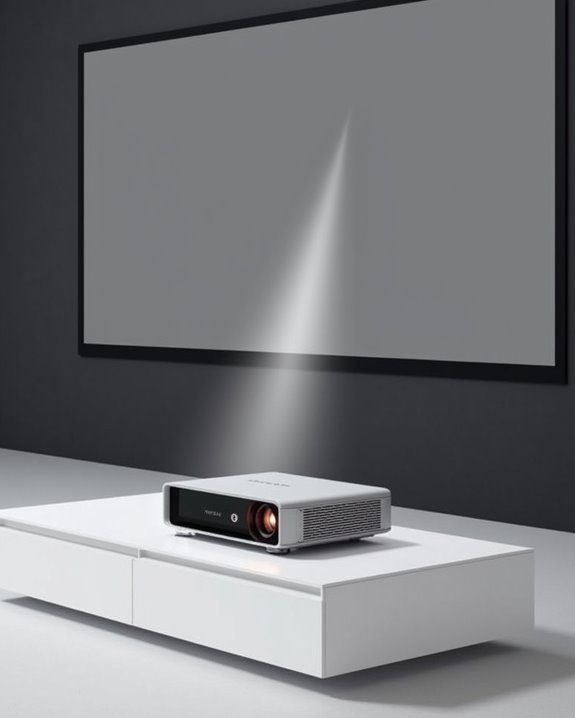
Setting up your short throw projector correctly can substantially impact your viewing experience, since even minor adjustments in placement can markedly alter image quality and size. Typically, you’ll need between 3 to 8 feet of throw distance to produce a large image, with precise positioning determined by your projector’s throw ratio. Various mounting options include tabletop placement, wall mounts, or ceiling installations, each requiring careful measurement to prevent distortion.
For ideal results, select a matte white screen specifically designed for short throw projection, ensuring it’s perfectly level both horizontally and vertically. Position your projector away from ambient light sources, as these can drastically reduce image contrast and visibility. Consider using blackout curtains or neutral, non-reflective wall colors near the screen to minimize unwanted light reflection.
The Future of Projection Technology: Trends and Innovations

The future of projection technology promises revolutionary advancements that’ll transform how you experience visual content in both home and professional environments. Laser-based systems with quantum enhancements will deliver superior brightness and color accuracy, while AI integration enables automatic keystone correction and personalized content optimization. You’ll benefit from projectors that adapt brightness based on ambient lighting conditions, creating ideal viewing experiences regardless of environment.
Short throw technology is evolving to incorporate spatial computing applications, where projection mapping blends virtual elements seamlessly with real-world spaces. Wireless connectivity standards like Wi-Fi 6E and USB-C interfaces will eliminate cable clutter, while IoT-enabled projectors will adjust settings automatically for peak performance. These innovations, coupled with energy-efficient LED and laser light sources, ensure that tomorrow’s projection systems will be more immersive, intuitive, and environmentally friendly.
Frequently Asked Questions
Do Short Throw Projectors Require Special Screens?
Yes, you’ll need tensioned projection screens for short throw projectors to avoid the “ladder effect” from surface waves. While you can use a wall, specialized screens improve image quality due to the steep projection angle.
Can Short Throw Projectors Work in Well-Lit Rooms?
Like a lighthouse cutting through fog, modern short throw projectors with 2,500+ lumens can indeed work in well-lit rooms. Your projector placement should minimize ambient lighting directly hitting the screen for best results.
How Does Ambient Light Affect Short Throw Projector Performance?
Ambient light washes out your short throw projector’s image, reducing contrast and color vibrancy. You’ll need higher projector brightness (2500+ lumens) and an ALR screen to maintain quality in well-lit environments.
Are Short Throw Projectors Suitable for Outdoor Movie Nights?
Yes, they’re suitable for evening outdoor movie nights. You’ll need darkness for ideal outdoor compatibility and a quality projection screen. Their close placement and decent brightness work well when ambient light is minimal.
What Maintenance Is Required for Short Throw Projector Lenses?
You’ll need to clean your short throw projector lens regularly with microfiber cloths and lens-specific cleaners. Don’t touch with bare hands. While lens replacement isn’t routine maintenance, professional servicing may be needed for persistent issues.

